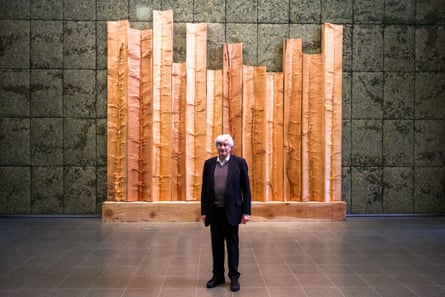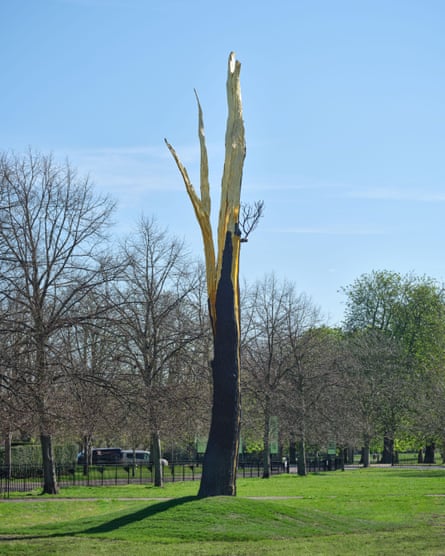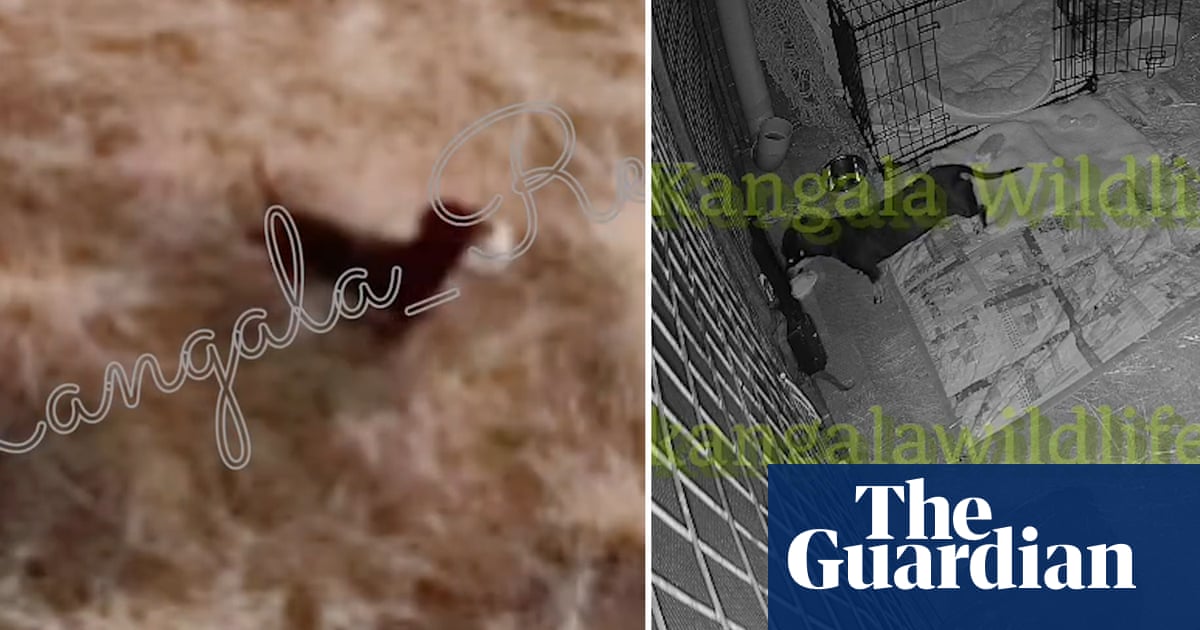It’s the aroma that lures you in. Deep and difficult to place, it comes from the thousands of laurel leaves that pad the walls of the Serpentine’s high central space. Laurel is the sharp-leaved evergreen tree sacred to the god Apollo and through him associated with victory and the arts. Poets are crowned with it. In Botticelli’s Primavera, a nymph is chased through laurel trees. A marble sculpture by Gian Lorenzo Bernini depicts Daphne transforming into a laurel to escape Apollo’s unwanted lust – a reason this tree is sacred to him.
So much cultural baggage. It can’t be easy to be a modern Italian artist with ancient Rome, the Renaissance and the baroque on your back. One of the captivating things about Giuseppe Penone’s meditative selection of his works is how easily this artist has cast off that weight of tradition ever since he started his life in art in 1968.
Modern Italian art has found various ways to deal with its highly visible past. The futurists did it with rage, calling for Venice’s canals to be filled in and denouncing pasta as soporific sludge. The group the young Penone belonged to, arte povera, found a healthier escape from tradition by rejecting cultural meaning and representation and instead letting raw materials speak for themselves.
Penone demonstrates in this lovely, poetic show how far you can take the arte povera principle of truth to simple stuff – right to the other side, until nature and myth, artist and wood, fuse together in a delirious metamorphosis. Born in Piedmont, he has an affinity with the forests of that region skirting the Alps. Almost everything in his mini-retrospective is made from trees. A heap of dried leaves on the floor imprinted with the artist’s body leads you to a potted sapling, from which is suspended a photograph of Penone’s face printed on a ceramic plaque that has holes for eyes, through which the living leafy branches grow.

This self-portrait, called Vegetal Gaze, suggests Penone is so at one with nature that the forest sees through his eyes. What is he claiming – that he is some kind of dryad, existing beyond the human destruction of forests? It’s tempting to be sceptical. But the love of nature here is radical: we humans are creatures of the woods, he says. Our animal life is only possible because of vegetable life.
One of the most stunning works is a gallery-length charcoal wall drawing. It evokes a deep history, as charcoal – charred timber – was among the drawing materials used by cave artists 30,000 years ago. Penone uses a technique he invented in 1970 of imprinting his skin on adhesive tape to “grow” a drawing from bodily traces – like a handprint made by a cave artist. The result gets more entangled and fascinating the longer you look.
It’s spring outside and spring in here, too. The wall-drawing faces the blossoming trees of Kensington Gardens and its Pollock-like vortex of twisted roots and flashing rivers captures the renewing miracle of the death and life of nature. This emerges as his core belief in the central space walled with laurel leaves where two sculptures face each other. Against one wall, like an altar, 12 whole tree trunks have been hewn open to reveal young, reborn trees. On the opposite side of the shadowy greened chamber, a clay life-mask of Penone has a gold-painted branch flowing through its mouth.

Here the arte povera ideal merges, after all, with Italian art’s old passion for myth. For Breath of Leaves, as it is called, recreates one of the weirdest details of Botticelli’s Primavera, a stream of flowery foliage emerging like exquisite vomit from a woman’s mouth. We are in an enchanted realm where humans and trees change into one another. Penone is no rational modernist at all. He is a shaman who communes with wood sprites, and you too will feel lost in trees, misty in roots, after imbibing this show’s remarkable central room and inhaling its scent of laurel.
after newsletter promotion
He even shows a group of bronze sculptures of erotic figures cavorting among giant flower pots – from arte povera to the stuff of baroque fountains. What fun. Outside in the blooming parkland, he has even more fun. Bronze sculptures of full-grown trees give nature a twist. A grove of stones, worn smooth in riverbeds, surround two trees. But boulders also balance in their high branches. The Earth and sky are reversed. Are the boulders as real as they look? Is disaster about to descend?
A third tree has a streak of gold paint running down its blasted bark, representing a lightning strike. It strikes rarely – and Penone knows how to tap it. He’s such a staple of modern art museums, it’s easy to take him for granted or consign him to the textbooks, but this show seduces you into his ecstatic vision of a green world perpetually being reborn. I just wanted more.

 2 months ago
42
2 months ago
42

















































